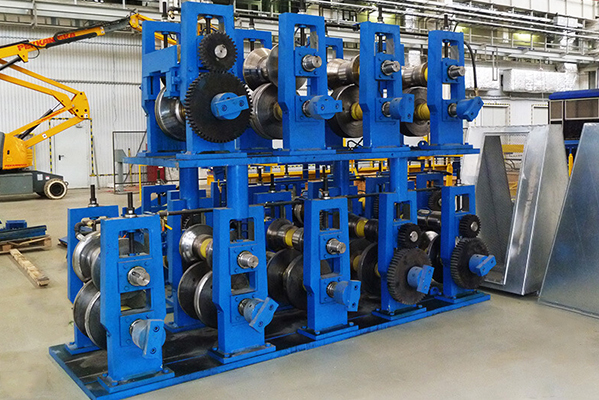Navigation Menu
Contact Us
- Email:
- info@wxavatar.com
- Address:
- Yurong Village, Yuqi Street, Huishan District, Wuxi, China.
Release Date:Apr 23, 2025 Visit:56 Source:Roll Forming Machine Factory
A decoiler is a mechanical device commonly used in manufacturing and metal processing industries. Its primary function is to unwind and feed coiled materials, such as metal sheets, wires, or strips, into production lines in a controlled manner. Decoilers play a crucial role in ensuring smooth and efficient material handling, reducing manual labor, and improving workflow consistency.
Key Functions of a Decoiler
Material Unwinding
Decoilers are designed to hold and gradually unwind coiled materials, allowing them to be fed into cutting, stamping, or forming machines. This process ensures a steady supply of material without interruptions.

Tension Control
Proper tension is essential to prevent material deformation or breakage. Decoilers often include tension control mechanisms, such as brakes or clutches, to maintain consistent feeding speed and avoid slack or excessive pulling.
Alignment Adjustment
Some decoilers feature adjustable arms or guides to ensure the material is properly aligned before entering downstream equipment. This helps minimize errors and improves processing accuracy.
Load Capacity Adaptation
Decoilers come in various sizes and load capacities to accommodate different coil weights and widths. Heavy-duty decoilers handle large industrial coils, while lighter models are used for smaller materials.
Automation Integration
Modern decoilers can be integrated with automated production lines, working in conjunction with feeders, straighteners, and other machinery to optimize efficiency.
Common Applications
Decoilers are widely used in industries such as:
Metal fabrication (processing steel, aluminum, and copper coils)
Automotive manufacturing (supplying materials for parts production)
Electrical equipment production (unwinding wires and cables)
Packaging (handling flexible packaging materials)

Conclusion
Decoilers are essential for streamlining production processes that require continuous material feeding. By ensuring smooth unwinding, tension control, and alignment, they contribute to operational efficiency and product quality. Their versatility makes them a valuable component in various industrial applications.